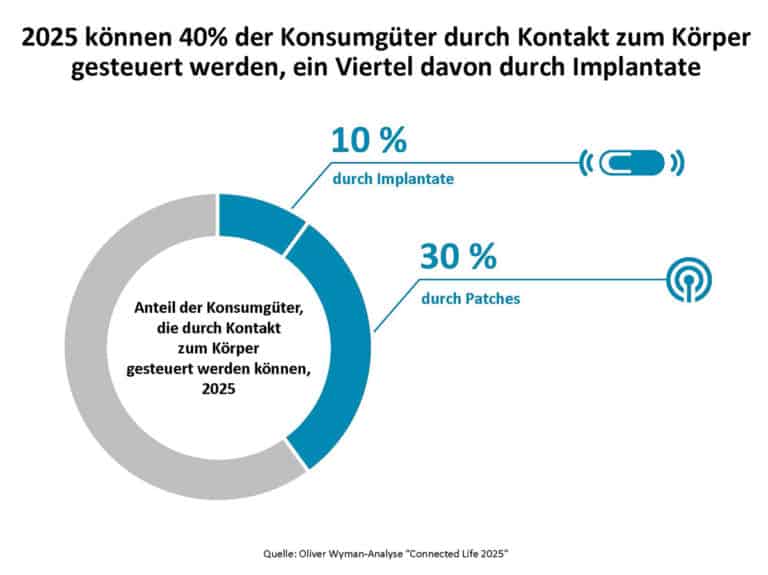Around 40 percent of all electronic devices could be controlled by contact with the body in just a few years. "Connected life" means, so to speak, the increasing integration and control of electronics - right down to electronic implants in the body. This is imminent, particularly in the area of health: an intelligent contact lens that not only improves eyesight, but also measures vital functions such as blood sugar levels and send the result directly to your smartphone or display it via micro-LED in the lens What still sounds like material from a sci-fi film is already being developed by companies like Google and Novartis. According to the current Oliver Wyman analysis “Connected Life 2025”, as early as 2025 ten percent of today's consumer goods could be controlled via implants.
A distinction is made between five development steps of the "Connected Life":1. Devices are connected to the Internet, eg the TV2. Devices communicate with each other, eg washing machine with the dryer.3. The human communicates contactlessly with devices, eg via language, facial expressions or Gestik.4. Devices communicate with sensors on the skin or in clothing (patches) .5. Devices communicate with sensors in the skin (implants).
Steps 1, 2 and 3 have long been there: Many TV sets are now web-enabled, and all other devices - for example acoustic assistant "Alexa" & Co - communicate like crazy. The next steps - "intelligent textiles and implants - follow Soon: Clothing equipped with sensors, for example, which reports the owner's heart rate to the smartphone, is largely ready for the market. The number of patents in the field of “smart clothing” in Europe has more than doubled in the last ten years, to just under 8.000. Samsung, for example, is currently working on the "S-Patch 3" prototype, which is attached to the body and continuously sends vital signs.



